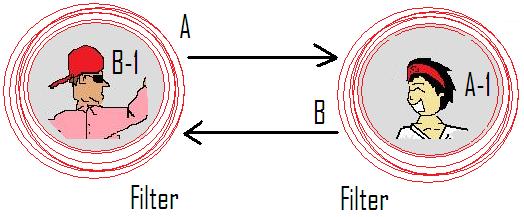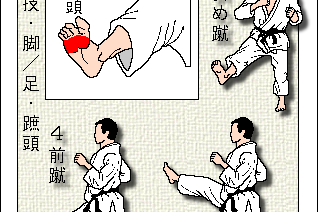Run, run, run! Sweat is dripping down my forehead.
I’m late for the monorail.
It leaves in five seconds or so, and I’m practically flying up the stairs to the platform.
“Yes, it’s still here, I’m going to make it!” I think and run for the automatic doors, with my fat backpack swinging behind me. Only a few steps left!
“Wham!” is the sound the doors make when they shut right in front of my nose.
“Noooooo!” I think, and look through the glass at the passengers inside, who made it on time.
“What the… they’re smiling at me!”
Yes, that’s right.
Everyone were standing there with big smiles on their faces, staring at me. Like they thought it was fun that I didn’t catch the monorail! “Are all Japanese born evil, or is this just a bad day?” I think as I see the monorail slowly leaving the platform.
I was stunned.
What I didn’t know then, was that I had just been exposed to one of the most mysterious aspects of Japanese culture that you can ever encounter:
“The Smile”
But I am not alone. I bet thousands of other foreigners have encountered “The Smile”. And that is not the only mysterious aspect of Japanese culture, oh no…
If you only knew…
Let me explain.
Let’s forget “The Smile” thing for a moment and look at this from a bigger perspective.
What I am about to tell you about is called inter-cultural communication. And people pay a lot of money to hear this, so listen (read) carefully.
Before we begin: Why do we need to understand the Japanese culture? Well, we train Japanese martial arts, so understanding the Japanese culture will help us understand the art, it’s quite simple. Some may argue that they train an “Okinawan” martial art, and yes, the Okinawans may have their own twist on Japanese culture, but they are Japanese under the surface, believe me.
Okay, now we have clarified why we need to understand the Japanese culture. The next question is of course: How can we understand it?
The answer is: By understanding inter-cultural communication.
By trying to understand what we can see above the surface, but more importantly below the surface.
Let me draw a picture, to show you what I mean:

I hope you look closely at the picture, because it took 30 minutes to draw…
To the left you see the Western world – Europe, America and so on. We are standing on an island. To the right you can see the Japanese world, on the Japanese Island.
Why is the Western guy fat? I don’t know.
Anyway, to understand the Japanese culture, here is what most Western people do:
They imitate what they see above the surface. They look over the sea, at the Japanese island, and see things like Japanese Music, Sports, Art, Clothes, Language, Architecture, and other Visible Elements of the Japanese culture. And they imitate it, to get a feeling of being closer, culturally.
And this actually makes them closer to the Japanese culture in a way. But only on the surface.
Because there is a problem (see picture).
The problem is that no matter how close we get above the surface, our islands can never join each other. They can’t even be next to each other. The problem lies under the surface.
Under the surface we find a bunch of important words like Upbringing, Philosophy, Custom, Viewpoint on Time, Values, Religion, Decision-making Process, Relationship, Habits and so on.
These are things which we cannot see from our island. Because they are under the surface. And therefore we can not understand them. Unless we actually go to the other island…
So, now we have identified the problem.
To sum it up, we know why we want to understand Japanese culture (we want to understand Japanese martial arts), we know how we should do to understand it (by understanding inter-cultural communication), and we know what the main problem is (the things below the surface).
I just remembered something! We haven’t defined communication. What is communication?!
Let me draw a new picture. This is communication:

This one was easier to draw. Here is the explanation:
Person A (to the left) for example says something to person B (to the right). His message travels along the arrow, to the right, but before it reaches the recipient (person B) it has to go through the cultural filter of person B.
This means person B will not understand message A.
He will understand message A-1, which is his understanding of message A after is has passed his cultural filter.
The same also applies the other way around, B to A.
Note that I used the word “understand” the message, instead of “hear” the message.
Why?
Because roughly 90% of communication is non-verbal elements. Like smiling…
Verbal elements stand for only 7-15% of communication. That is why body-language is a critical factor when it comes to communication. For instance, Japanese businessmen bow over and over, even when they talk on the phone!
I find it quite amusing.
Anyway, it’s time to stop here. In this post, part 1, we covered the basics of understanding the Japanese, or if you want to use the fancy word, inter-cultural communication. In the next post, part 2, I’ll tell you about the real secrets.
Like that darn smile…



9 Comments